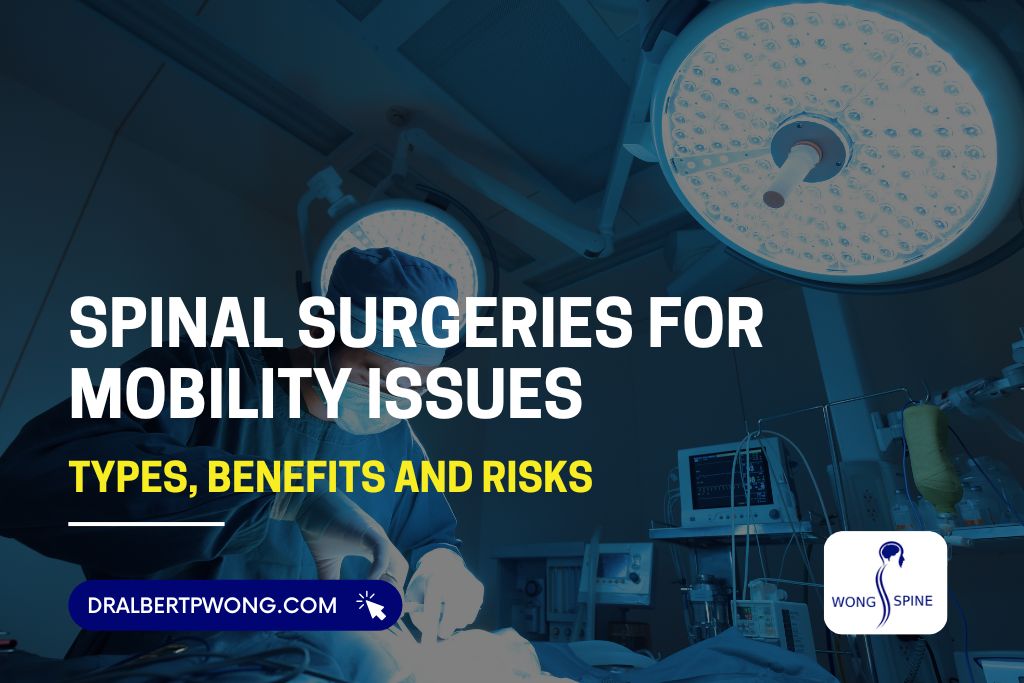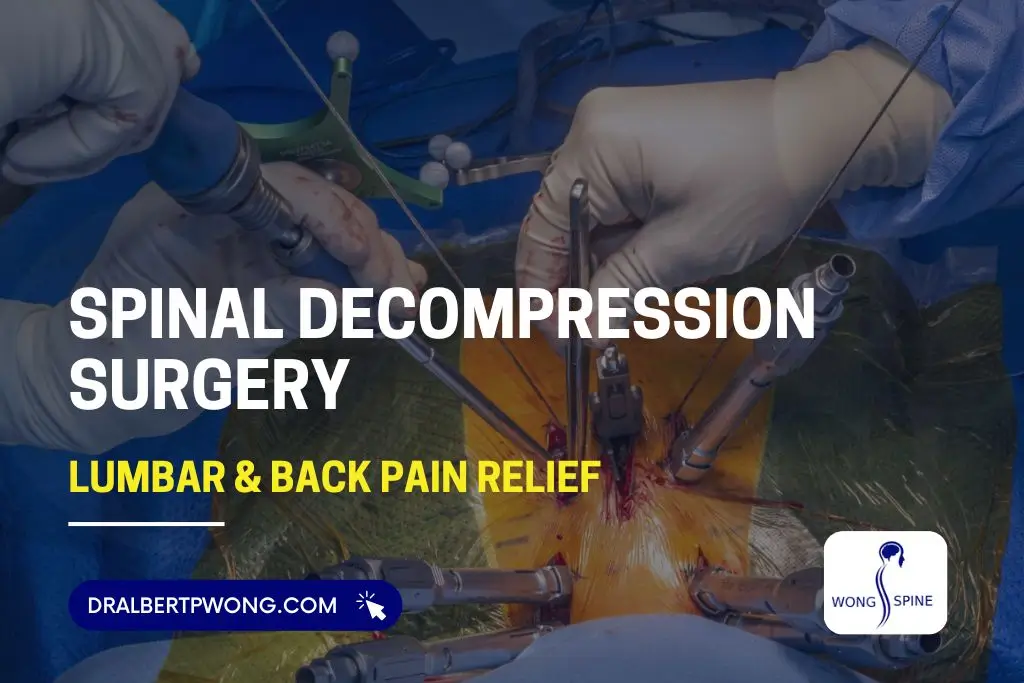Spine Surgeries for Mobility Issues
Spinal surgeries for mobility issues are performed to treat conditions such as spinal instability, nerve compression, and degenerative disc disease. These conditions can cause chronic back pain, numbness, weakness, and reduced mobility. Procedures like spinal fusion, discectomy, and laminectomy are used to relieve pressure on spinal nerves and stabilize the spine.
Surgery is considered only when non-surgical treatments such as physical therapy, medication, or injections do not provide relief. Evidence shows that lumbar fusion may help selected patients with degenerative back pain, but results vary and risks exist. Patients should be clearly informed about expected outcomes, benefits, and possible complications before surgery.
Importance of Mobility Issues
Mobility is essential for independence and daily function. Back pain, nerve compression, or degenerative disc disease can limit movement, making routine activities difficult. Spinal surgeries address these issues by relieving pressure on nerves, correcting spinal misalignment, and restoring motion. Procedures may stabilize vertebrae, remove damaged tissue, or replace discs to improve spine function and mobility.
Common Conditions Treated with Spinal Surgery
Spinal surgery treats conditions that cause chronic pain and limit movement, including:
- Degenerative disc disease
- Spinal stenosis
- Herniated discs
- Scoliosis and other spinal deformities
- Fractures or spinal instability
- Nerve compression
When these conditions reduce mobility or cause persistent pain, procedures such as spinal fusion or decompression can help restore function and relieve symptoms.
Types Spinal Surgeries for mobility issues
Minimally Invasive Spine Surgery (MIS)
Minimally invasive surgery uses small incisions and specialized tools to repair or stabilize the spine while minimizing muscle and tissue damage.
This approach reduces scarring, shortens recovery, and allows faster return to daily activities. MIS is commonly used for herniated discs or mild spinal instability and has less impact on adjacent spinal segments compared to traditional fusion.
Spinal Fusion Surgery
Spinal fusion joins two or more vertebrae permanently using screws, rods, or bone grafts to stabilize the spine. It relieves pain, corrects deformities, and prevents nerve compression.
Fusion is often performed in the lower back to improve alignment and posture. While effective for stability, it can limit motion and may increase the risk of adjacent segment disease. Evidence suggests benefits for degenerative conditions are sometimes limited compared to non-surgical treatment.
Complex Spinal Procedures
Severe spinal deformities or trauma may require combined procedures, such as fusion with decompression, to relieve nerve pressure and restore mobility. Artificial disc replacement is an alternative to fusion that preserves motion while maintaining stability and strength.
Benefits of Spinal Fusion
Improved Mobility
Spinal fusion restores proper spinal alignment and eliminates abnormal motion, reducing pain. While flexibility in the fused segment is limited, overall mobility, balance, and posture improve after healing.
Long-Term Pain Relief
By stabilizing affected spinal segments, fusion reduces nerve irritation and chronic back pain, improving comfort and physical activity levels.
Enhanced Quality of Life
Patients often regain confidence in movement, sleep better, and can perform activities that were previously difficult. Rehabilitation during recovery supports a smooth return to daily life.
Risks Associated with Spinal Surgeries
Spinal surgery carries potential risks, including:
- Infection or bleeding at the surgical site
- Blood clots
- Nerve injury or compression
- Implant failure (screws or rods)
- Spinal instability near fused segments
- Rarely, the need for revision surgery (e.g., pseudoarthrosis, or failure to fuse)
Recovery time varies by procedure and patient health. Fusion surgeries, especially in the lumbar spine, may require longer recovery. Patients often use braces, follow activity restrictions, and attend physical therapy to restore motion and flexibility.
Surgery is a serious decision. Discuss all risks and benefits with a spine specialist. When performed correctly, spinal surgery can relieve pain, restore function, and improve mobility.
Surgery for Lumbar Spinal Stenosis
Indications
Lumbar spinal stenosis occurs when the spinal canal narrows, compressing spinal nerves and causing leg weakness, numbness, or pain. Surgery is considered when non-surgical treatments fail. The goal is to relieve nerve pressure and restore mobility.
Procedure
Decompression or lumbar fusion surgery removes bone spurs or disc material to relieve nerve compression. Fusion may be added to stabilize the spine if instability is present. Surgeons carefully protect the spinal cord and surrounding tissues while ensuring proper alignment with implants.
Post-Operative Care
Recovery usually takes several weeks. Patients begin gentle movement and physical therapy to regain flexibility and function. Regular follow-ups monitor healing, fusion progress, and prevent recurrence. Maintaining proper posture and completing rehabilitation exercises are essential for restoring mobility.
Life-Changing Spinal Surgeries for Mobility Issues
Spinal surgery can significantly improve quality of life for patients with chronic back pain and limited mobility. Procedures, from spinal fusion to minimally invasive surgery, aim to stabilize the spine, restore alignment, and relieve nerve pressure.
While surgery carries risks and requires careful planning, long-term benefits often outweigh temporary challenges. With an experienced surgeon and proper post-surgery care, patients can achieve pain relief, improved posture, and restored mobility, enhancing daily function and independence.
Treatment at Spine Wong
Spine Wong, led by Dr. Albert Wong in Los Angeles, specializes in treating spinal conditions that cause pain, nerve compression, and mobility issues. Our clinic offers a range of services, including minimally invasive spinal surgeries, spinal fusion, and non-surgical management for chronic back and neck problems.
Patients receive personalized care, with procedures aimed at relieving pain, restoring mobility, and improving spinal stability. The team emphasizes careful evaluation, advanced surgical techniques, and guided rehabilitation to ensure optimal recovery and long-term spine health.






